Regardless of your geographical background, it’s hard not to agree on the universal appeal of indulging in a sweet treat every now and then. Desserts bring people together across cultures, with each nation having its own distinct spin on this beloved post-meal tradition. With this thought in mind, let’s embark on a culinary journey through traditional Japanese desserts, featuring recipes for each treat so you can recreate them at home. Let the adventure begin!
Matcha Green Tea Ice Cream
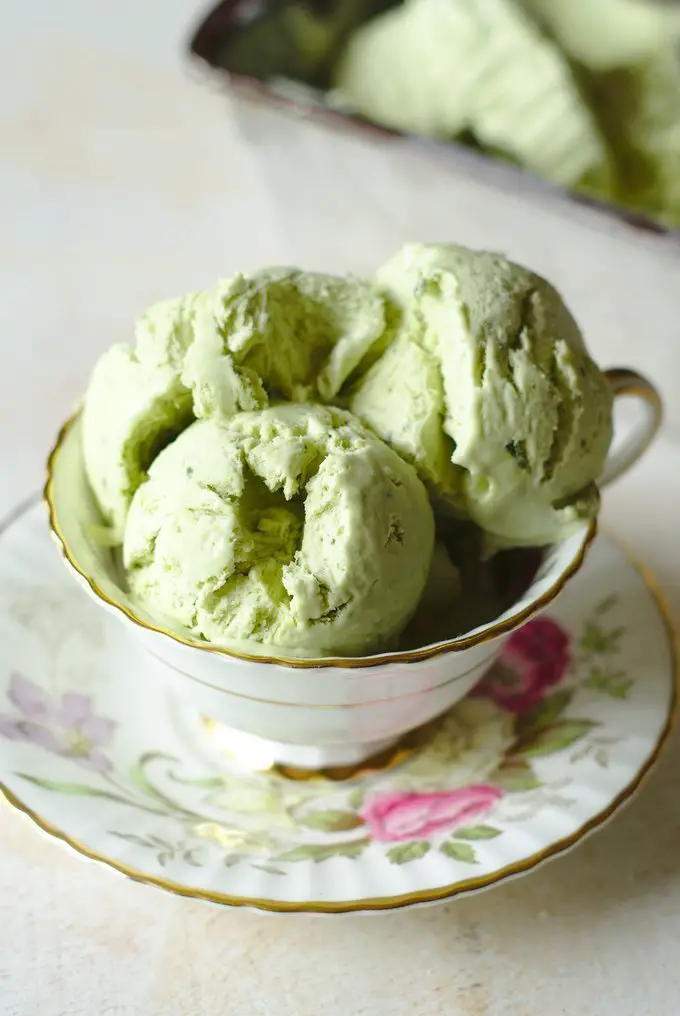
For a refreshing spin on traditional matcha flavor, matcha enthusiasts can also indulge in this matcha ice cream. The combination of sweet ice cream and subtle smokiness and bitterness from the matcha creates a delightful treat for those who prefer less sugary desserts.
Moreover, this dessert is remarkably straightforward to prepare, requiring only four ingredients – matcha powder, condensed milk, whipping cream, and vanilla extract – and just five minutes of hands-on time, thanks to the absence of churning requirements.
Japanese Coffee Jelly
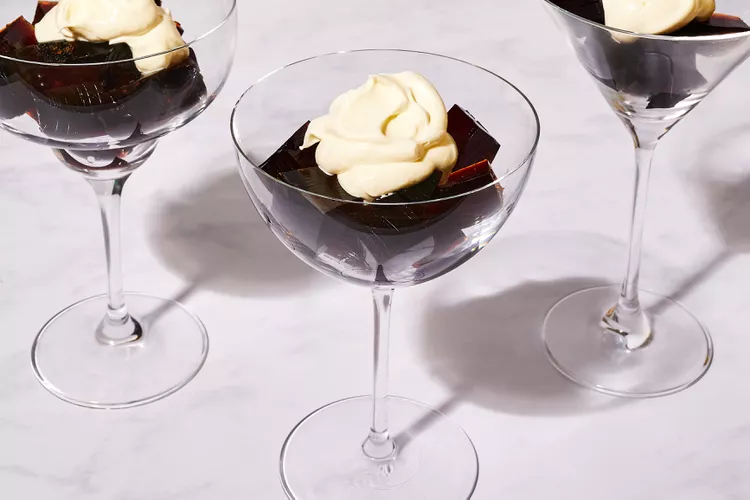
In Japan, a beloved dessert emerged in the 1960s when a popular coffee shop chain created a unique concoction made from gelatin and black coffee. Dubbed kohii zerii, this sweet treat became a staple in convenience stores and restaurants across the country, earning its reputation as an easy-to-enjoy, low-sugar alternative to other desserts.
As a refreshing summer treat that combines caffeine and jello, coffee jelly has won over fans of both worlds, making it an excellent choice for those seeking a light and revitalizing dessert option.
Mizu Yokan
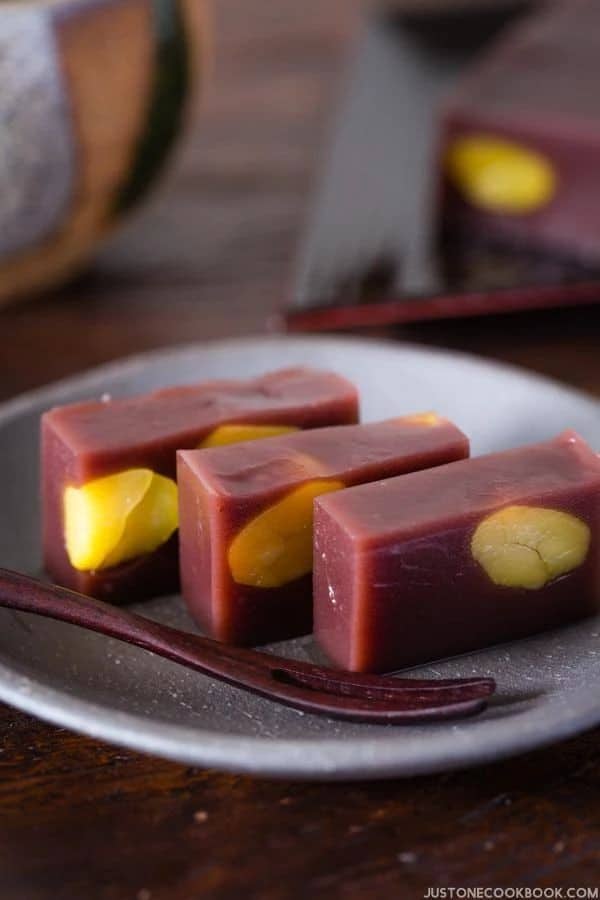
In Japan’s summer months, a refreshing treat often takes center stage: mizu yokan. This chilled delight is a rectangular block of smooth, jelly-like texture, made from Japanese red azuki beans. The sweetness comes from a combination of sugar and red bean paste, which harmonizes the natural flavors of the azuki beans. While various flavors of yokan exist, the classic red bean variety remains a crowd-pleaser due to its straightforward celebration of the humble azuki bean’s inherent charm.
Manju
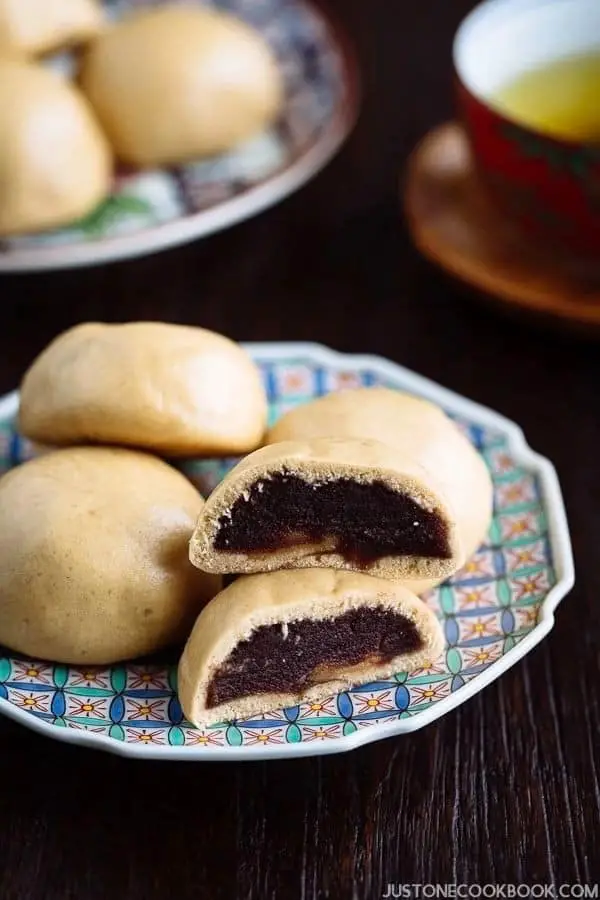
Steamed to perfection, Manju is a sweet and delectable Japanese dessert that takes on a unique form. This small, round cake is filled with a rich red bean paste, also known as Anko, giving it a distinct flavor profile. While visually similar to mochi, Manju differs in its composition – made with all-purpose flour instead of rice, resulting in a thicker, more cake-like texture that sets it apart from the chewy and soft consistency of traditional mochi.
Japanese Shu Cream
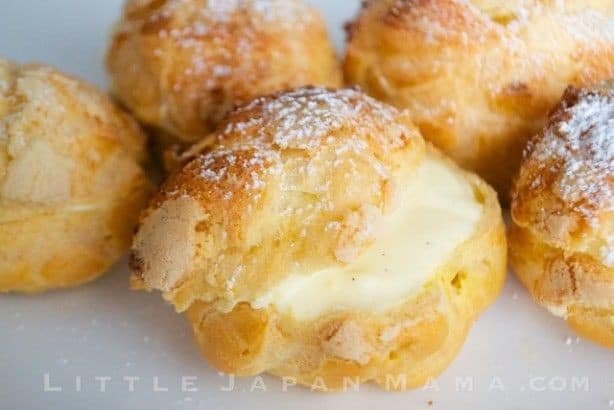
While sharing some similarities with its French counterpart, Japanese shu cream is distinct in its own right. One key difference lies in the filling – whereas the classic choux pastry might be paired with cream, shu cream typically gets filled with a sweet, custard-like substance. This unique twist has contributed to the dessert’s enduring popularity across Japan, where it can be found on menus and even in vending machines.
Mitarashi Dango
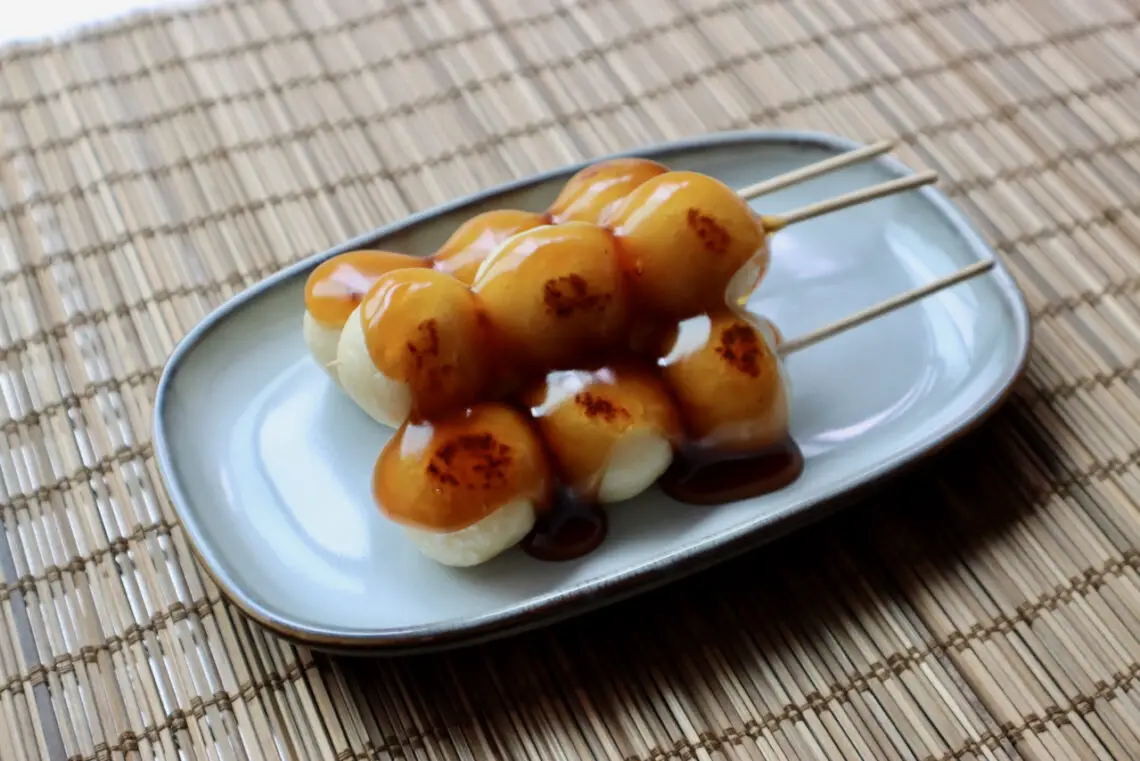
The origins of Mitarashi Dango, a type of Japanese sweet, can be traced back to the Kamo Mitarashi Tea House in Kyoto. This unique dessert consists of skewered rice dumpling balls that are first grilled until they develop a satisfying brown color. A rich, savory sauce made with soy sauce as its base then coats the dango, striking a perfect balance between salty and sweet flavors.
When consumed at events and festivals, Mitarashi Dango is often characterized by its distinctive burnt aroma and sleek, glass-like glaze.
Isobeyaki
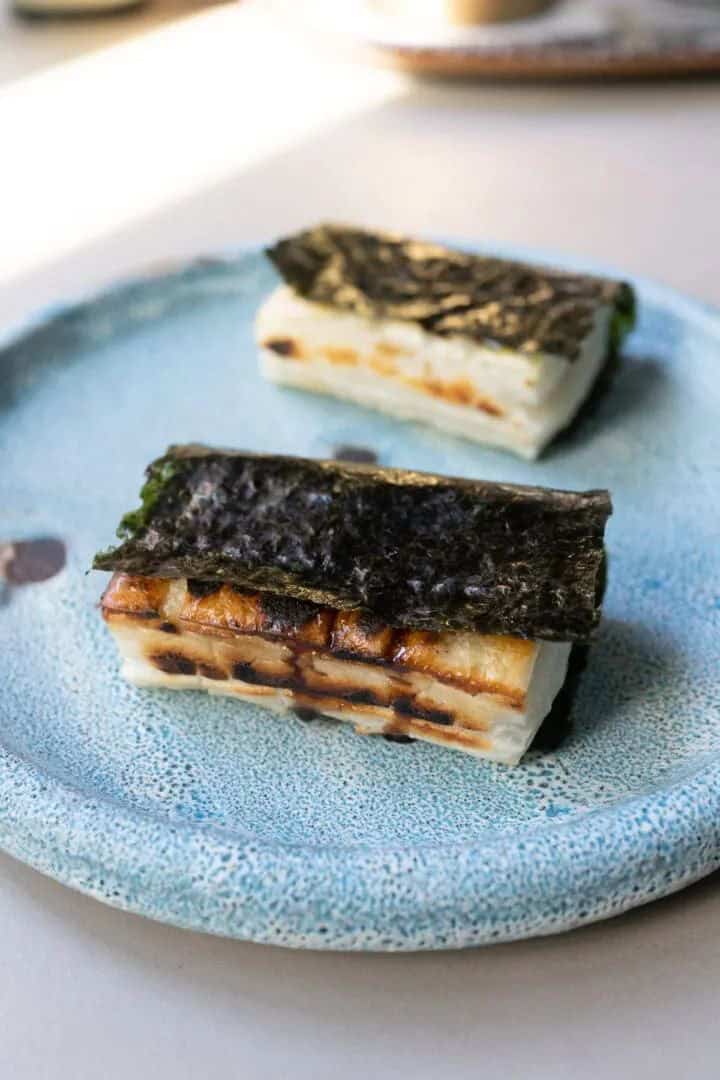
This iconic rice cake snack is a masterclass in contrasting flavors, transforming into a delightful dessert that’s equally suited for sweet and savory palates. As a popular treat during Japan’s New Year celebrations, its allure knows no bounds. The preparation process involves thoroughly cooking the cake through various methods like toasting, pan-frying, or grilling, until it attains a golden brown hue.
Next, a rich soy sauce glaze is applied, and the resulting masterpiece is wrapped in seaweed, beautifully marrying sweet and salty notes.
Amanatto
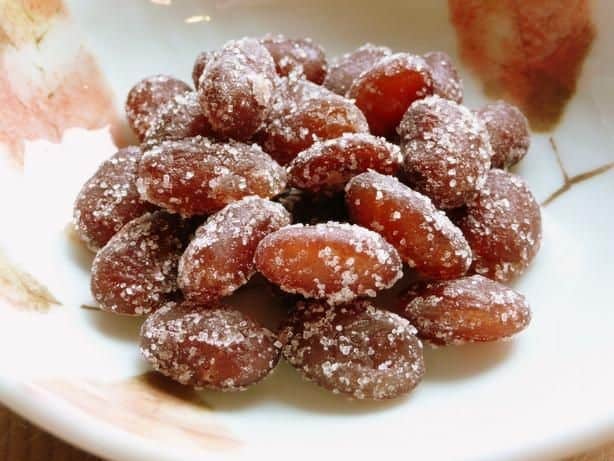
In the realm of Japanese sweets, Amanatto stands as a timeless classic. Its roots date back to the 1860s when sugar first became widely available in Japan, revolutionizing the country’s confectionery scene. This delectable treat is made by boiling black soybeans or red azuki beans with sugar syrup, before coating them in refined sugar and drying them to perfection. The result is a sweet and satisfying dessert that has been delighting people of all ages in Japan for generations.
Zenzai
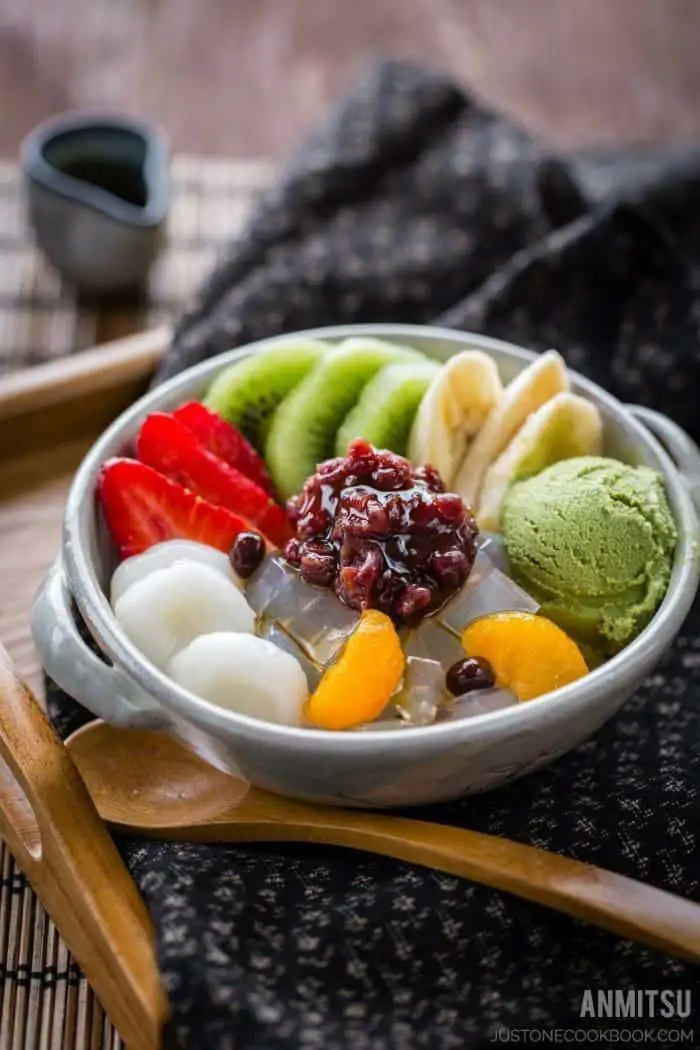
In a refreshing twist on traditional Japanese sweets, Zenzai presents a delightful combination of flavors and textures. This sweet red bean soup is typically served hot, accompanied by glutinous rice flour dumplings known as mochi or shiratam Dango. These dumplings are nestled within the soup itself, adding an extra layer of enjoyment to this unique dessert.
The sweetness in Zenzai comes from either diluting sweetened red bean paste with water or boiling dried red beans to create a rich and velvety texture.
Anmitsu

In Japan, there’s a long-standing tradition of enjoying a simple yet unique cold fruit salad that originated during the Meiji era. This dessert’s charm lies in its use of small cubes of agar jelly, a translucent and white gelatinous substance derived from red algae. The agar is dissolved in water or fruit juice to create a jelly-like consistency. Typically, this sweet treat is served with a combination of sweetened red bean paste, boiled peas, or other fruits.
What’s more, it often comes with a side of sweet black syrup, known as Mitsu, which can be drizzled over the jelly before being devoured. The end result is a refreshing and delightful dessert that’s perfect for hot summer days.
Japanese Christmas Cake
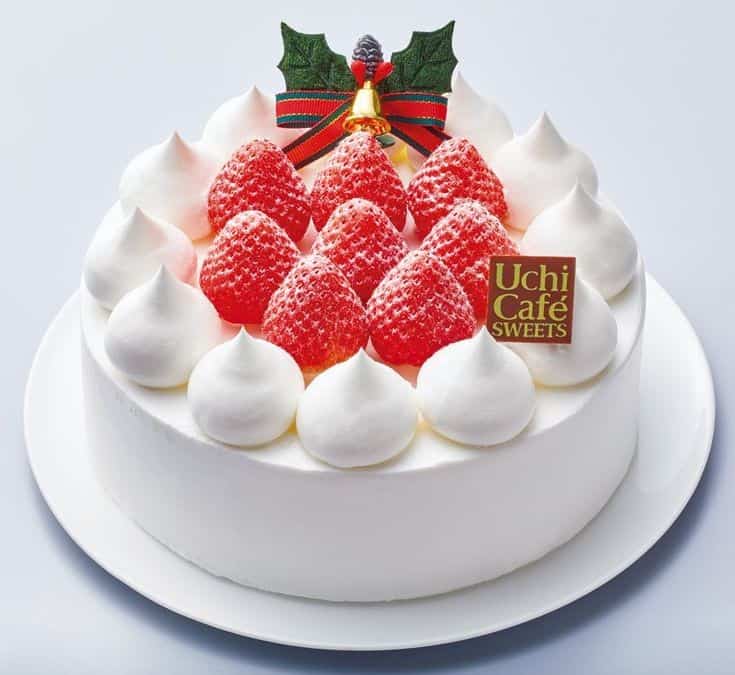
In Japan, Christmas cake is a departure from the traditional dense and rich British-style cakes. Instead, it’s a lighter, fluffier dessert that’s more akin to an American strawberry shortcake. The typical Japanese Christmas cake consists of whipped cream, freshly cut strawberries, and spongy sponge cake. This unique confection has its roots in the Meiji period, when Japan was heavily influenced by Western desserts and baked goods.
The result is a delightful, airy dessert that’s perfect for the holiday season.
Japanese Cheesecake
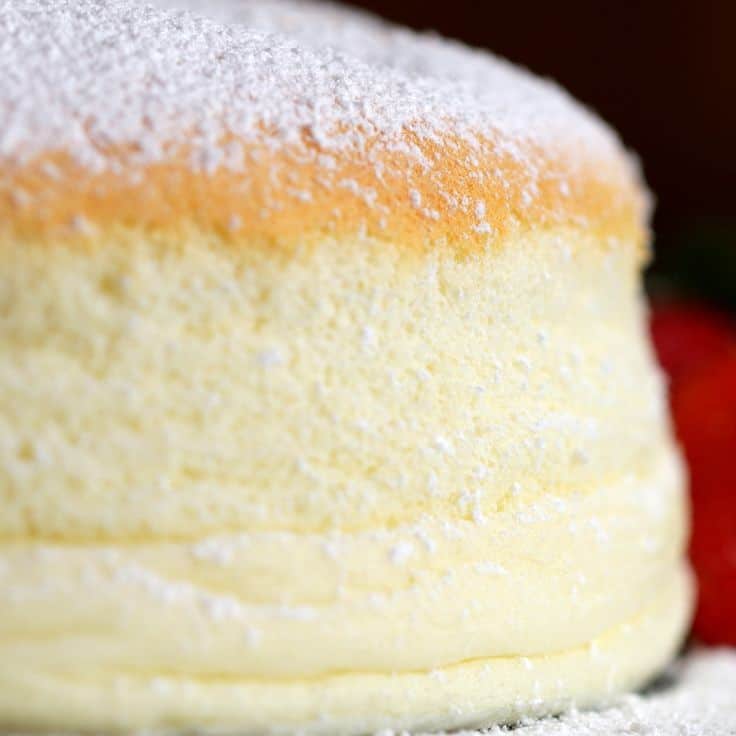
Japanese cheesecakes deviate significantly from their Western counterparts, much like the unique approach to Christmas cake. A key difference lies in their texture, which is often described as fluffy and sponge-like. This distinct consistency arises from the application of traditional Japanese baking techniques, specifically the practice of whisking egg whites separately before incorporating them by hand for aeration purposes.
This method yields a rich and creamy taste profile accompanied by a soft and airy texture. Additionally, Japanese cheesecakes can be enjoyed at either room temperature or straight from the oven, rendering them a versatile dessert option that can be savored in various ways.
Japanese Cake Roll

Japanese cake rolls offer a unique blend of textures and flavors. The airy chiffon cake base is characteristically low in sugar, making it an excellent choice for those who prefer less sweet treats. Unlike their Western counterparts, Japanese cake rolls typically boast lighter and more refined flavor profiles. The incorporation of light whipped cream and fresh strawberries adds to the overall subtle sweetness and delicate nature of these delectable desserts.
Dorayaki
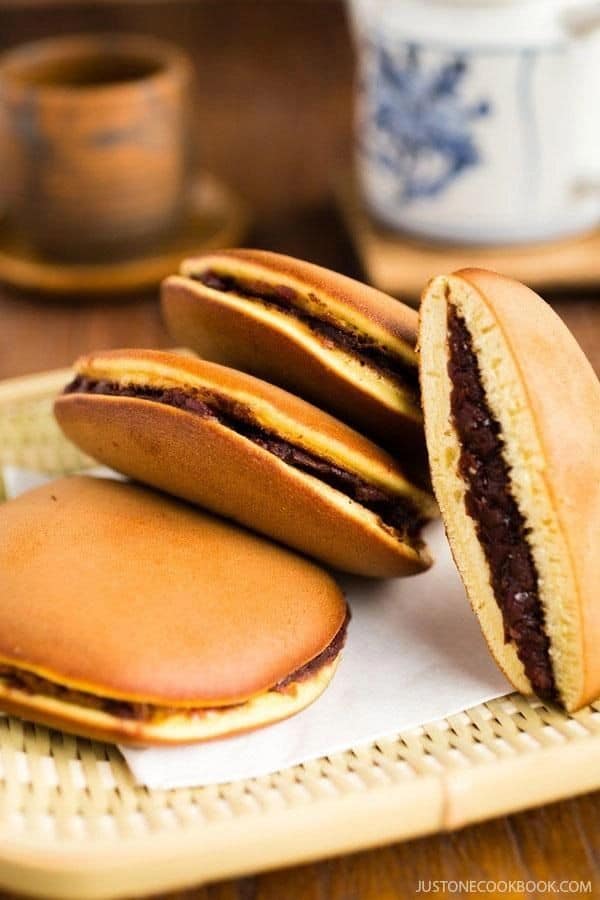
In Japan, dorayaki is a beloved dessert that combines two pancake-like patties with a sweet azuki bean paste filling. The unique flavor profile is reminiscent of Castella, a type of sponge cake. Moreover, dorayaki has become an integral part of Japanese popular culture, thanks in part to its portrayal as Doraemon’s favorite food in various anime and manga series. This delightful treat is sure to satisfy any sweet tooth.
Japanese Honey Toast
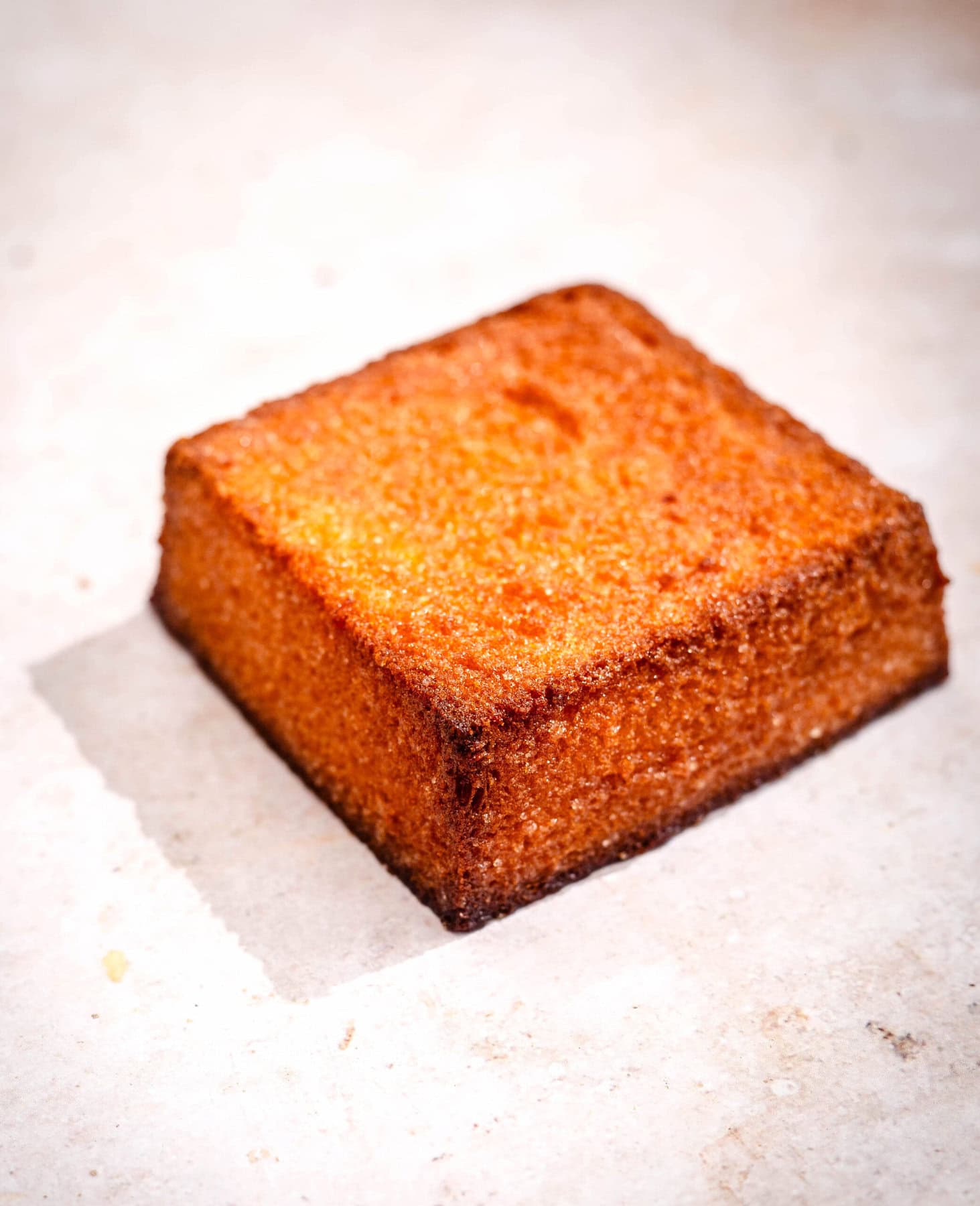
Japanese Honey Toast is a beloved sweet treat that’s surprisingly simple to prepare. At its core, it’s a generous serving of toasted bread, often in the form of an oversized slice or even an entire loaf, topped with an array of scrumptious ingredients. These can range from creamy ice cream and golden honey to sweet butter, juicy fruit, or other decadent dessert toppings that cater to individual tastes.
The key element that sets Japanese Honey Toast apart is its substantial size – the bread used in this dessert is often so large it borders on being a whole loaf, making it a satisfyingly filling choice among Japan’s traditional sweets.
Taiyaki
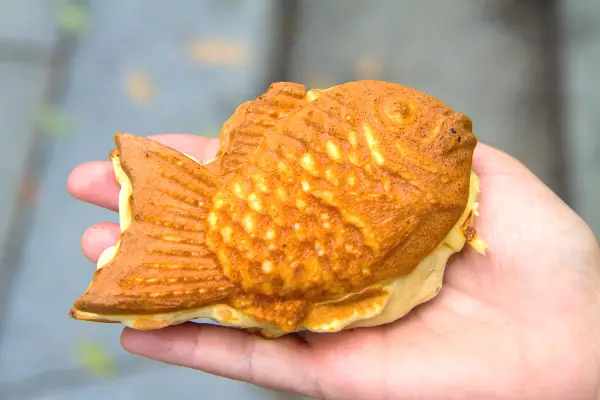
Taiyaki, a quintessential Japanese dessert, is often enjoyed as a warm and indulgent treat during the winter months. Its unique fish-shaped exterior, crafted from a delicate flour-based dough, is baked to a golden crisp perfection. This sweet and savory vessel is then filled with the rich flavors of azuki sweet bean paste, creating a delightful culinary experience that’s hard to resist.
With its versatility in terms of varieties and flavors, Taiyaki has become an incredibly popular snack treat as well as a beloved dessert.
Daifuku
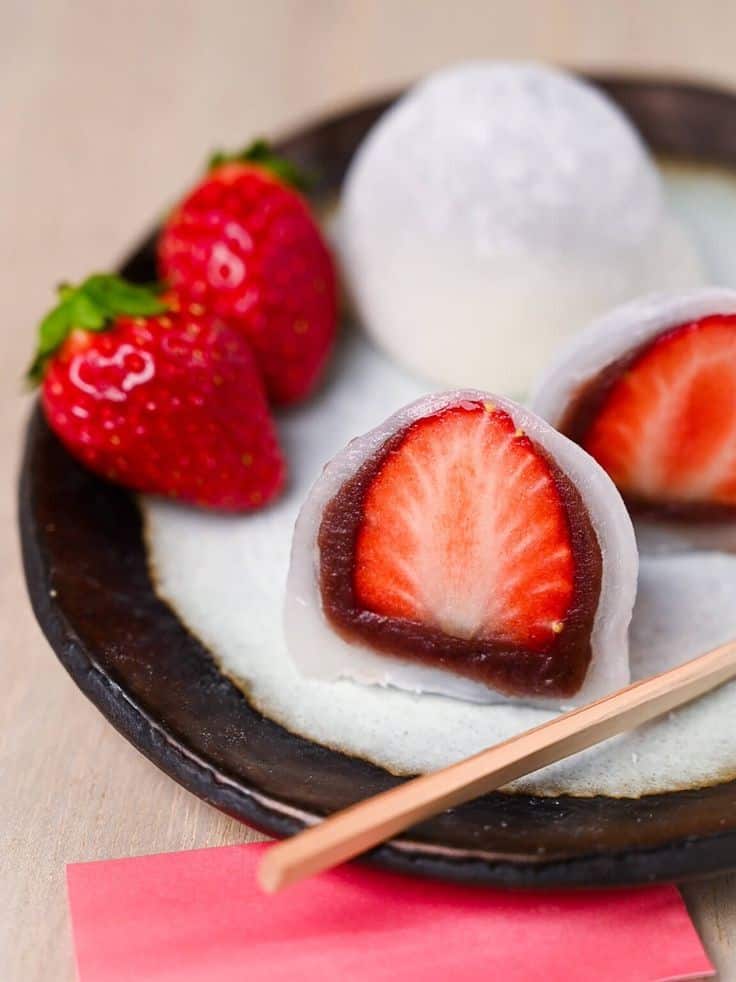
Daifuku, a beloved Japanese treat, boasts a unique texture and flavor combination. Its chewy exterior, crafted from mochi, provides a delightful contrast to the sweet and creamy filling within. The shell’s color can vary, with pale green and pink being the most prevalent hues. Typically, the filling is made with traditional Japanese red bean paste, also known as Tsubuan or Anko, offering a semi-sweet taste experience.
Okoshi
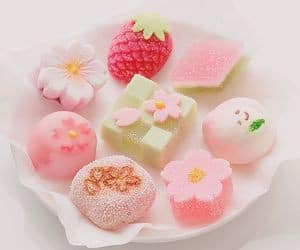
In Japan, a unique spin on traditional rice crispy treats is crafted by combining expanded rice grains with a sweet and sticky binding agent. The process begins with thoroughly roasting the rice grains until they ‘pop’ or expand, giving them a distinct texture. For added flavor and moisture, a mixture of butter or corn syrup with sugar is then used to hold the popped rice grains together.
Historically, peanuts played a starring role in elevating the flavor profile of Okoshi, but modern variations have given way to a wide range of creative ingredients, including sesame seeds, dried fruit, matcha green tea, and even chocolate.
Miso Butter Cookies
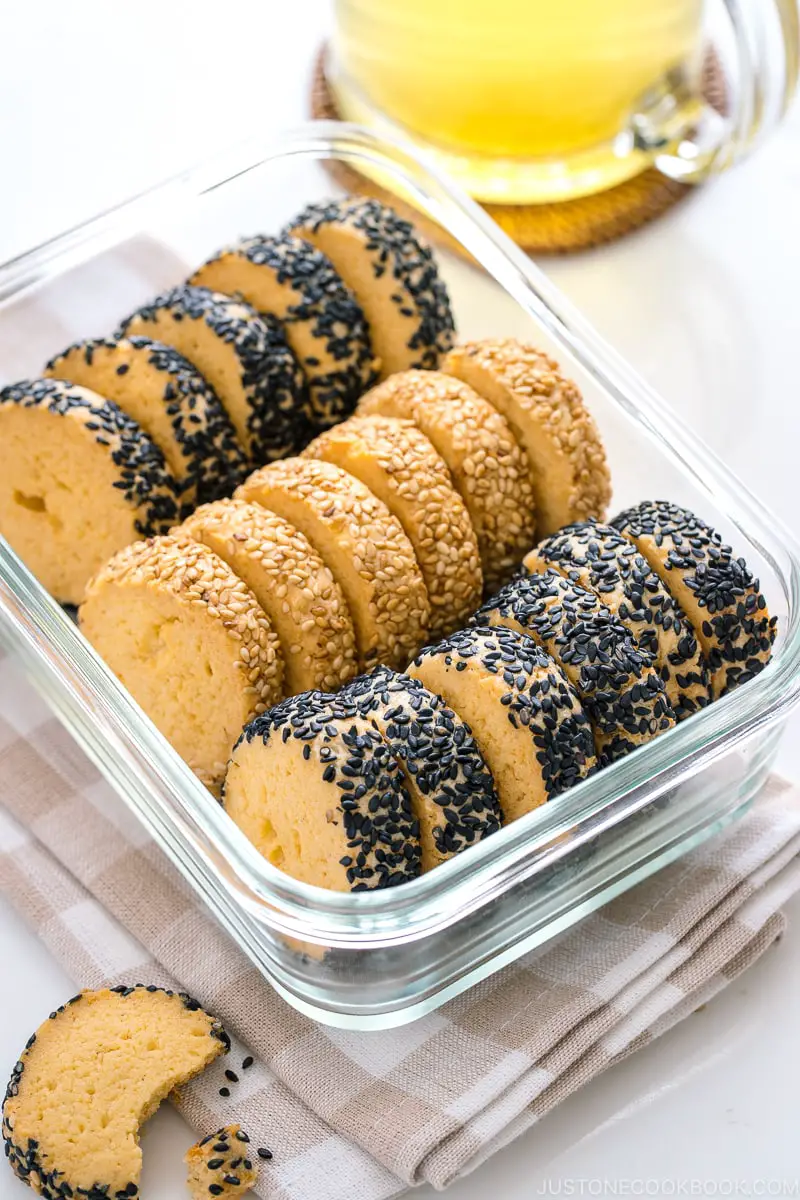
These delicate cookies are an ideal match for afternoon tea, showcasing a harmonious blend of sweet and savory flavors. The subtle richness from buttery goodness is balanced by the nutty essence of sesame seeds, while the savory miso adds a delightful depth to each bite. With only seven ingredients required, this Japanese dessert delight is sure to impress, offering a versatile treat for any gathering.
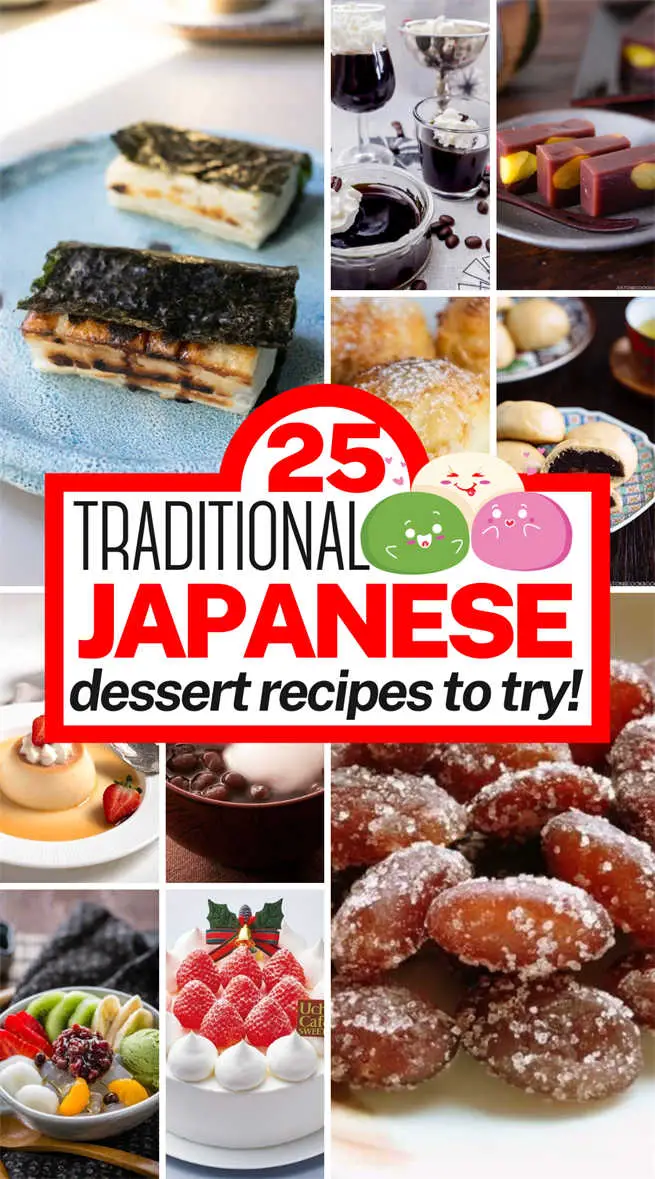

Barbara is an enthusiastic food-exploring person that goes through different culinary experiences. She got inspired by creating a pizza blog post after she tasted one of the best-selling pizzas in Toledo.